
Looked at DRS, controlling the running game, and fielding the ball-in-play.
Let’s look at statistics that cover the most important aspects of defense by pitchers. Three aspects follow:
- Defensive Runs Saved (DRS). It is an aggregate of many aspects. Some of them are good plays/misplays, stolen bases, and bunts.
- Controlling the Running Game. It includes preventing extra bases on hits and stolen bases.
- Fielding. It includes fielding the ball-in-play and the range of the pitcher.
Defensive Runs Saved.
One broad statistic that measures each pitcher’s defense is Defensive Runs Saved (DRS). Although I’d like to know more about what it includes for pitchers, for pitchers it does include good plays/misplays that impact RE-24, stolen base runs saved, and bunt runs saved.
Last season in the Majors, pitchers with at least 30 innings pitched had DRSs ranging from positive 6 and negative 6. The two pitchers with 6 DRS were Jake Irvin (Nationals) and Tanner Bibee (Guardians).
However, DRS is not a perfect measure of pitcher defence. Recently, a FanGraphs article named Shota Imanago (only 3 DRS) as the number one defensive pitcher in the Majors. Another great defensive pitcher was Max Fried, who won Gold Gloves in 2020, 2021, and 2022. Last season, Max Fried had zero DRS.
For the Diamondbacks pitchers with at least 30 innings, DRS ranged from positive 1 to negative 3. For the Diamondbacks, the median DRS was negative 1 (below average). Next season, perhaps the Diamondbacks pitchers could improve their DRS. See the following chart.
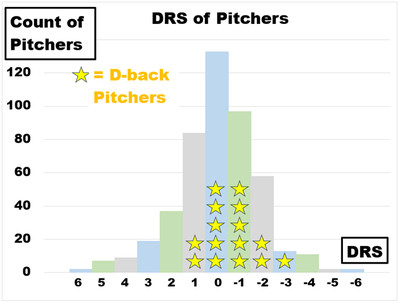
2024 Season, Min 30 Innings. Data from FanGraphs.
Ryne Nelson was the only Diamondbacks’ starter with a positive DRS, as shown in the following table.
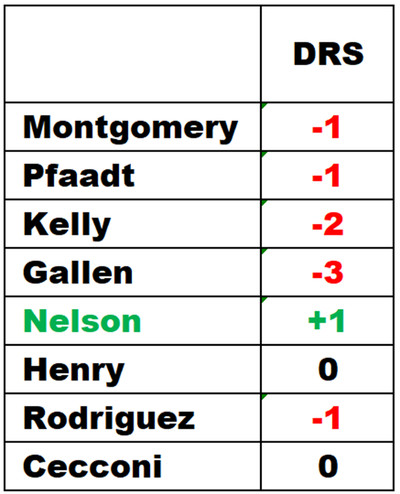
2024 Season, Min. 7 games started, Data from FanGraphs.
Bryce Jarvis was the only Diamondbacks’ reliever with a positive DRS, as shown in the following table.
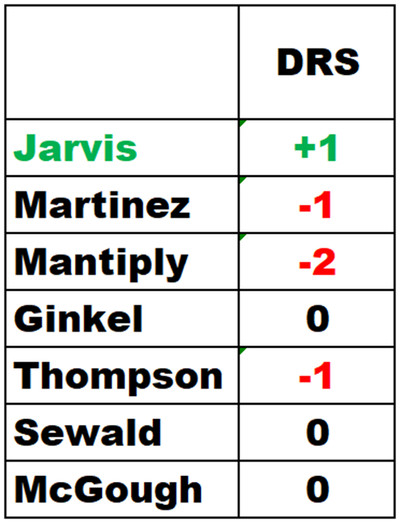
2024 Season, Min. 30 Innings. Data from FanGraphs.
Controlling the Running Game.
It’s often said that bases are more often stolen off the pitcher, not the catcher.
“John Dewan estimated that 65 percent of the control is in the pitchers’ hands while the remaining 35 percent is up to the catcher.” — FAQ, The Fielding Bible
Two measures of the running game are extra bases taken on hits (by batters and baserunners) and stolen bases.
The following table shows that starters Brandon Pfaadt, Merrill Kelly, and Bryce Jarvis were the best Diamondbacks’ starters at controlling the running game.
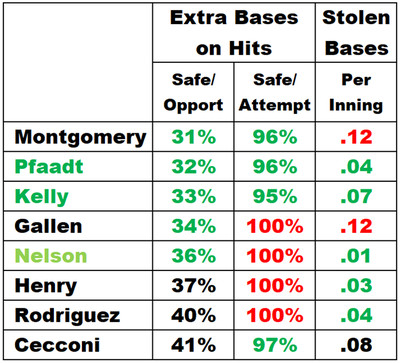
2024 Season, Min 7 games started. Data from Baseball Savant.
The following table shows that relievers Bryce Jarvis and Justin Martinez were the best Diamondbacks’ relievers at controlling the running game.
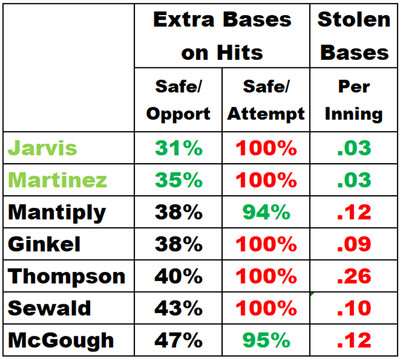
2024 Season, Min. 30 Innings. Data from Baseball Savant.
Fielding.
One important pitcher-unique fielding aspect is covering first base when the first baseman fields the ball-in-play. Instead of that data, I found putouts. Some (perhaps most) of the putouts were the pitcher covering first base. The two pitchers with the most putouts per inning were Merrill Kelly and Ryan Thompson.
Perhaps simple is better. Two simple measures of fielding are fielding percentage and range. An estimate of range was calculated by averaging the distance between the pitcher and the two hits closest to the pitcher (excluding hits with hang time of 3 seconds or less). The idea is that for comparison purposes, the average distance represents the edge of each pitcher’s range. Inside that range he executes near-perfect fielding.
The following table shows Zac Gallen was the best fielder of the starters. Close behind were Merrill Kelly and Tommy Henry.
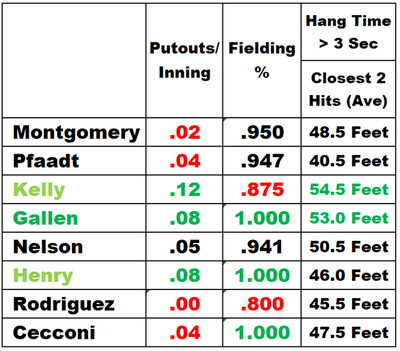
2024 Season, Min. 7 starts. Data from Baseball Savant.
The following table shows Paul Sewald was the best fielder of the relievers. Close behind were Kevin Ginkel, Ryan Thompson, and Joe Mantiply.
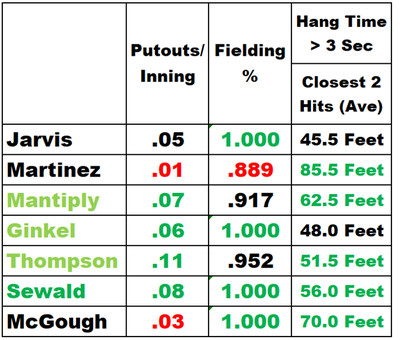
2024 Season, Min 30 innings. Data from Baseball Savant.
Summary.
Last season, the Diamondbacks pitchers were mostly average or below average in their DRSs. Although DRS is not a perfect measure of defense, improving their DRSs would be a good thing.
The pitchers with above average DRS were Ryne Nelson and Bryce Jarvis.
The pitchers who were best at controlling the running game were starters Brandon Pfaadt, Merrill Kelly, and Ryne Nelson, and relievers Bryce Jarvis and Justin Martinez.
The pitchers who were the best fielders were starter Zac Gallen and reliever Paul Sewald. Close behind were starters Merrill Kelly and Tommy Henry, and relievers Kevin Ginkel, Ryan Thompson, and Joe Mantiply.
